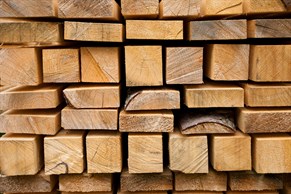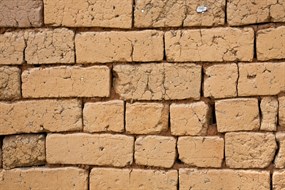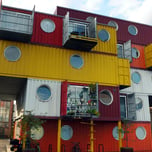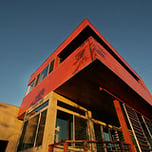- GreenMatch
- Blog
- Sustainable Construction: Zoom on 5 Green Materials Widely Used Nowadays
Sustainable Construction: Zoom on 5 Green Materials Widely Used Nowadays
What Does Sustainable Construction Mean?
Sustainable construction is often referred as sustainable design or green building. Its main purpose is finding sustainable alternatives throughout the building’s life-cycle - that is, from the design phase, going through construction, operation, maintenance and renovation, to the demolition stage. Using green building methods allows you to save energy and therefore decrease your energy bill and at the same time become more eco-friendly by reducing your CO² emissions. Therefore, the main purposes of green buildings are: to use energy efficiently, to make sure the construction is healthy for the occupants and to reduce waste and pollution through the building process but also over time. A more specific form of green building could be natural building, which focuses on natural materials locally available. This technique helps to decrease the transportation costs of those materials and hence save some money on your overall construction process spendings.
Our Top 5 Green Materials Selection
Wood

Wood has always been extensively used for construction purposes, in particular in Northern Europe such as Scandinavian or Baltic countries. Timber is mainly used to build roofs, as it has a high strength for its weight. Thus it is a strong and flexible material, easily available and simple to use. Wood is often viewed as CO² neutral or even positive as it absorbs carbon dioxide daily and rejects oxygen in the atmosphere through the phenomenon widely known as photosynthesis. It is also cheap compared to other materials due to its worldwide availability and the different uses one can give to it.
However, if you want to embrace the sustainable movement, be sure to pick wood coming from certified forest. You can verify the provenance of the wood you want to buy using various certifications such as the Sustainable Forestry Initiative (SFI) or the Forestry Stewardship Council (FSC).
Recycled Metals
Among the recycled metals used today for green building purposes, copper and steel are the ones with the best properties. First, copper can be recycled indefinitely and therefore does not bring additional mining costs. However, when purchasing copper for the first time, it can be more expensive than other construction metals. his cost is compensated with the fact that copper is durable and requires low maintenance through times. You can for example use recycled copper to build your roof as it is more efficient than other roof materials on a building life-cycle basis of 30 years.
Recycled steel is also commonly used, due to its construction properties. Steel is durable and easily recyclable; it also has the highest strength-to-weight ratio of any other building materials. Nonetheless, it is at the extraction stage quite expensive and environmentally costly compared to other materials used for construction purposes.
Bricks

Two types of green bricks emerge in the sustainable construction field: wool bricks and mud bricks.
The first one, wool bricks, is 37% stronger than normal bricks. This property is achieved by adding wool and a natural polymer found in seaweeds to the clay of the bricks. It represents a non-toxic material widely used in construction nowadays. As it dries hard, it does not require to fire it to make it dry as it is needed for traditional bricks. Therefore, energy is saved during its fabrication process.
You can also use mud bricks, that are considered as non-toxic, recyclable and sustainable construction materials. Moreover, you can find mud bricks easily as it can be produced locally, using straw or cement to make it stronger.
Sustainable Concrete
Concrete is also considered as a widely used construction material. However, when used at its primary form, it can represent a threat for the environment. Indeed, concrete is responsible for 7% to 10% of CO² emissions. To decrease those emissions, a more sustainable concrete can be made by incorporating crushed glasses, wood chips or slag that would have gone to waste otherwise. Timbercrete, for example, is a mix of sawdust and concrete. It is lighter than solid concrete but has better insulating capabilities than normal concrete.
Straw Bales
Finally, you can also use straw bales during your construction process, in particular for insulating purposes. The main characteristics of straw bales constructions include its high insulating capabilities, its availability, its naturally high fire-retardant capabilities and its renewable dimension. However, be sure that your construction is big enough to use straw bales, as it is quite space consuming compared to other construction materials.
We strive to connect our customers with the right product and supplier. Would you like to be part of GreenMatch?





